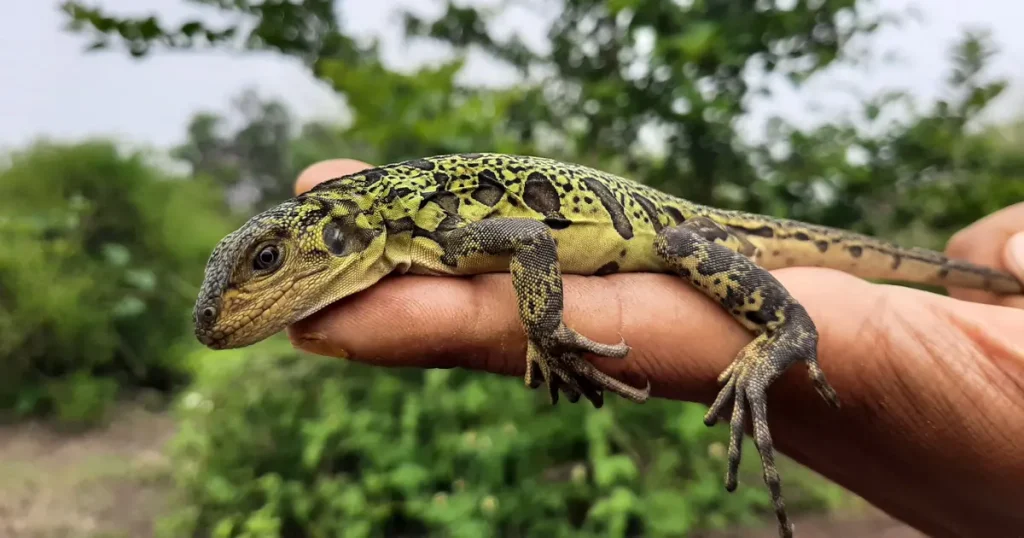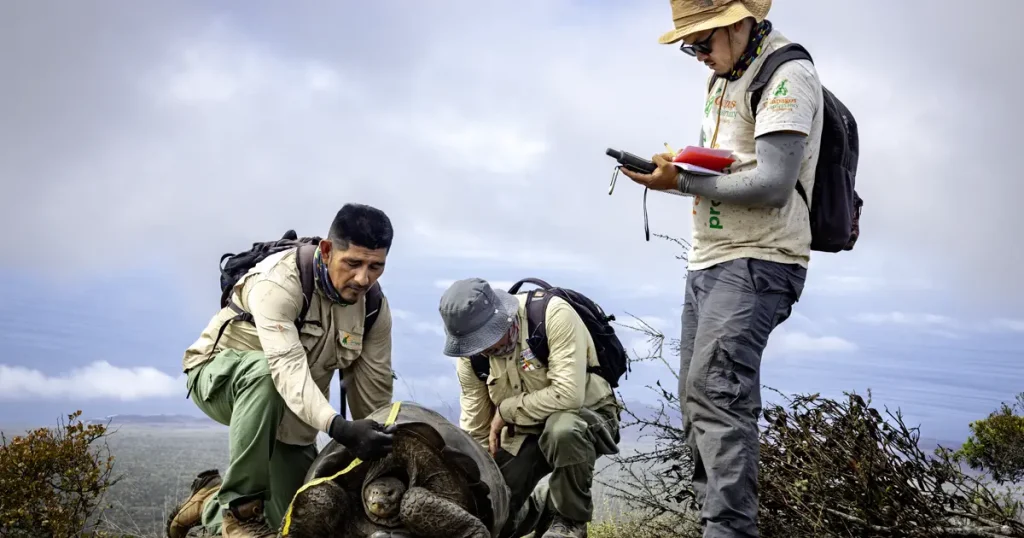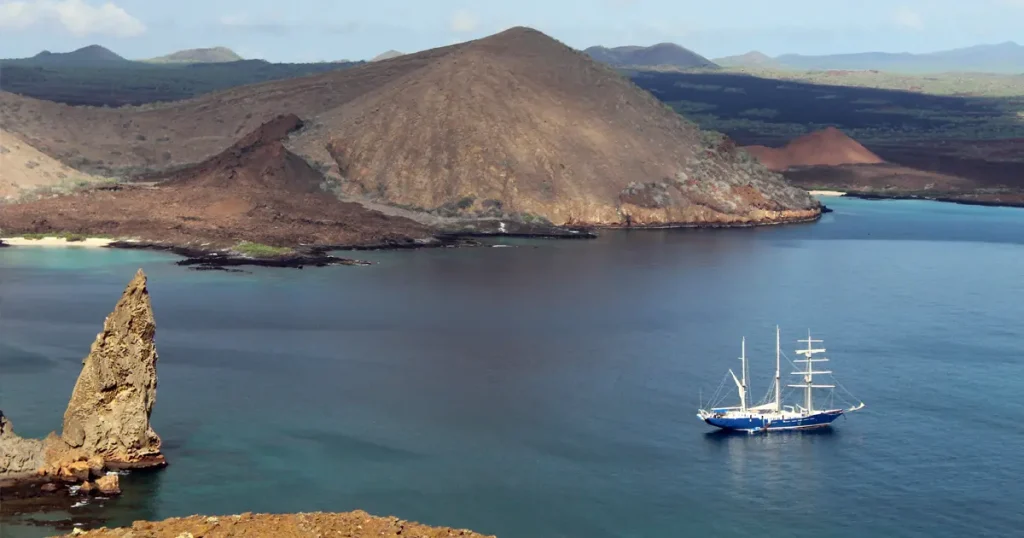The Galápagos Pink Iguana: A Striking and Endangered Species
Date: March 7, 2023.
//Versión en español abajo.//
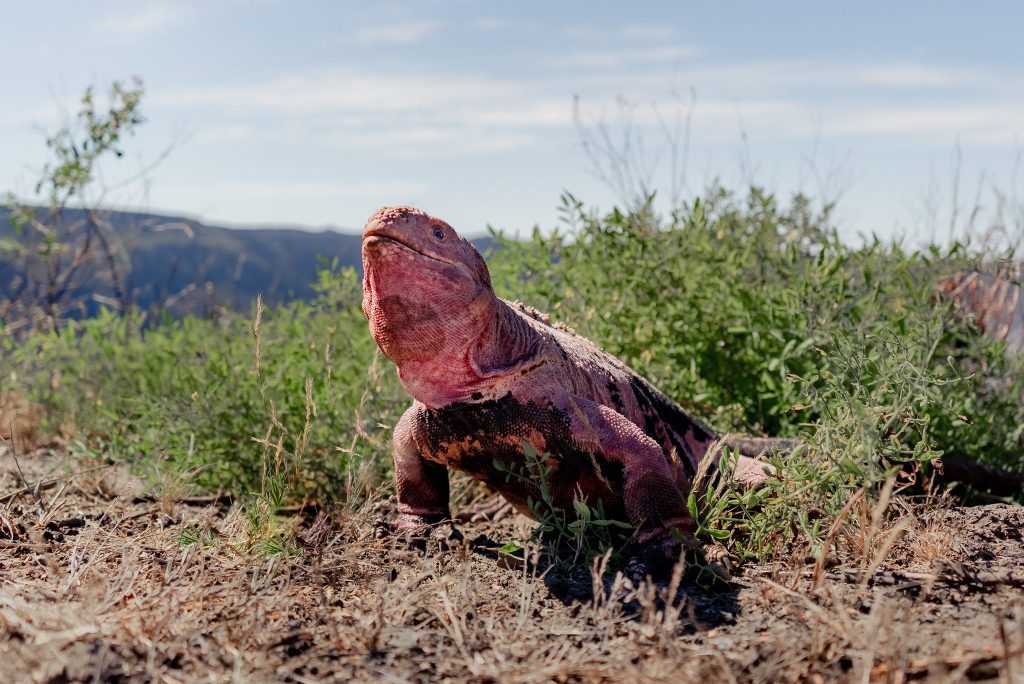
The Galápagos Islands are known for their unique and diverse wildlife, with one of the rarest and most fascinating species being the Galápagos Pink Iguana (Conolophus marthae). This iguana is known for its distinctive pink coloration and is found only on the slopes of Wolf Volcano on Isabela Island.
The Galápagos Pink Iguana was first discovered in 1986, but it wasn’t until 2009 that it was officially recognized as a new species. It is one of the few iguana species in the world that is completely terrestrial, living and foraging on the rocky volcanic slopes of its home range.
Unfortunately, the Galápagos Pink Iguana is also one of the most endangered species in the Galapagos Islands, with an estimated population of only 200-300 individuals. Its isolated range and small population size make it vulnerable to habitat destruction, invasive species, and climate change.
Conservation efforts are underway to protect the Galápagos Pink Iguana and its habitat. The species is listed as Critically Endangered, and the Ecuadorian government has implemented measures to protect the Wolf Volcano area, including restricting access and monitoring the iguana population.
Due to these protective measures, only scientists and conservationists can observe the Pink Iguana in its habitat. Seeing this rare and beautiful creature is a unique and unforgettable experience, and hopefully, with continued conservation work, it will one day be possible for Galapagueños and visitors alike.
The discovery last year of Pink Iguana hatchlings by Galápagos Conservancy and the Galápagos National Park Directorate has brought new insights into the threats against the iguanas, along with renewed hope for saving them. Through conservation efforts and raising awareness, Galápagos Conservancy is working to ensure the survival of the Pink Iguana and other unique species in the Galápagos Islands for generations to come.
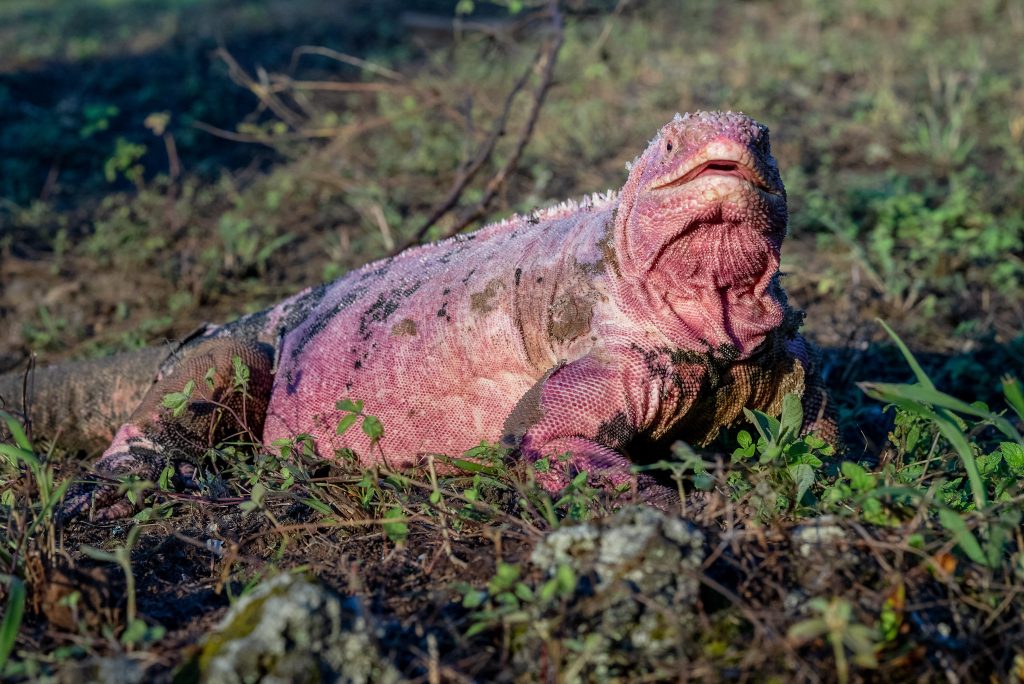
La iguana rosada de Galápagos: Una especie única y en peligro de extinción
Las islas Galápagos son mundialmente conocidas por su fauna única y diversa, y una de las especies más raras y fascinantes que habitan en este Archipiélago es la iguana rosada de Galápagos Conolophus marthae. Este reptil es conocido por su característica coloración rosada y se encuentra únicamente en las laderas del volcán Wolf, en la isla Isabela.
La iguana rosada fue registrada por primera vez en 1986, sin embargo, no fue sino hasta el 2009 cuando se la reconoció oficialmente como nueva especie. Es una de las pocas especies de iguanas en el mundo completamente terrestre, que vive y se alimenta en las rocosas laderas volcánicas de su área de distribución. No obstante, la iguana rosada de Galápagos es también una de las especies más amenazadas del Archipiélago, su área de distribución aislada y el pequeño tamaño de su población la hacen vulnerable a la destrucción de su hábitat, las especies invasoras y el cambio climático.
La buena noticia es que se están realizando esfuerzos de conservación para proteger a la iguana rosada de Galápagos y su hábitat. La especie está catalogada en peligro crítico de extinción, por lo que el gobierno ecuatoriano ha puesto en marcha medidas para proteger la zona del volcán Wolf, así como la restricción del acceso a la zona donde habita la especie y la vigilancia permanente de la población de la iguana C. marthae.
Como parte de las medidas de manejo para garantizar la protección de la iguana rosada, el acceso a su hábitat está restringido únicamente al sector ciencia y conservación, sin embargo, ver a esta rara y hermosa criatura es una experiencia única e inolvidable, y un recordatorio de la importancia de proteger y preservar el mundo natural para las generaciones venideras.
Gracias a las acertadas y permanentes acciones de manejo y conservación podemos juntar esfuerzos para garantizar la supervivencia de la iguana rosada y la de otras especies únicas del Archipiélago de Galápagos.
